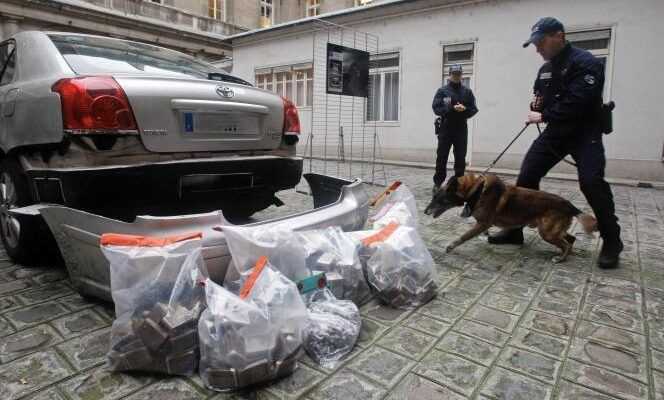This is an evolution that has taken place quietly and which is beginning to worry the health authorities. The litany of announcements of cannabis seizures in France masks another reality: the very significant increase in THC, the molecule at the origin of psychotropic effects, as well as the continued expansion of synthetic products. Several regional health agencies (ARS) have sounded the alarm in recent months. These products carry an increased risk of dependence and their effects can, in some cases, lead to hospitalization.
According to figures from the national technical and scientific police (PTS), the average level of THC in cannabis resin seized by law enforcement agencies has tripled in twenty years. “Until the 2000s, it was between 6% and 8 % “, explains Céline C., legal expert in narcotic products, engineer and head of the narcotics section of the forensic science laboratory in Lyon. He then progressed slowly until the year 2010, “Which is a pivotal year”.
Since then, the concentration of THC in cannabis resin has jumped by an average of 11%, to “28% in 2019”. Sometimes forensic services detect rates of up to 50% or more for cannabis presented in another form in the final product. This is the case, for example, with “BHO”, for Butane Herb Oil, which consists in extracting cannabis herb with Butane gas, a very pure oil that can reach 80% THC.
A purity sought by traffickers
More recently, the PTS even analyzed a cannabis gel, contained in a small plastic syringe, reaching 91% THC. A purity now sought after by traffickers, from producer to seller, who adapt like any other business to a demand in this direction. As a result, they changed their production method by selecting the seeds on purpose.
It is no longer rare to read on social networks, Snapchat for the most part, ads from dealers promoting the recent arrival of a particular product called for example “Triple strike” or “Hit three times filtered” and put forward for its psychoactive power. Herbal cannabis would be less affected by this increase in THC. Before 2000, his THC level was 4% on average and has been running between 10% and 13% in recent years, notes the PTS.
You have 77.42% of this article left to read. The rest is for subscribers only.
